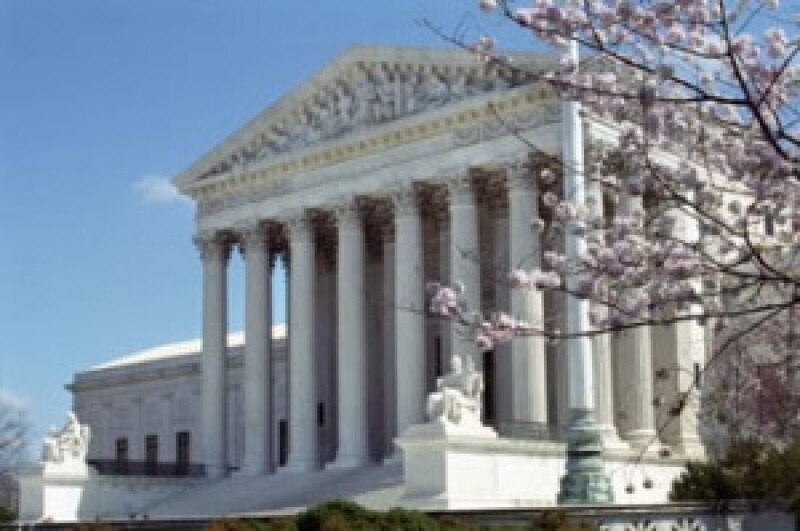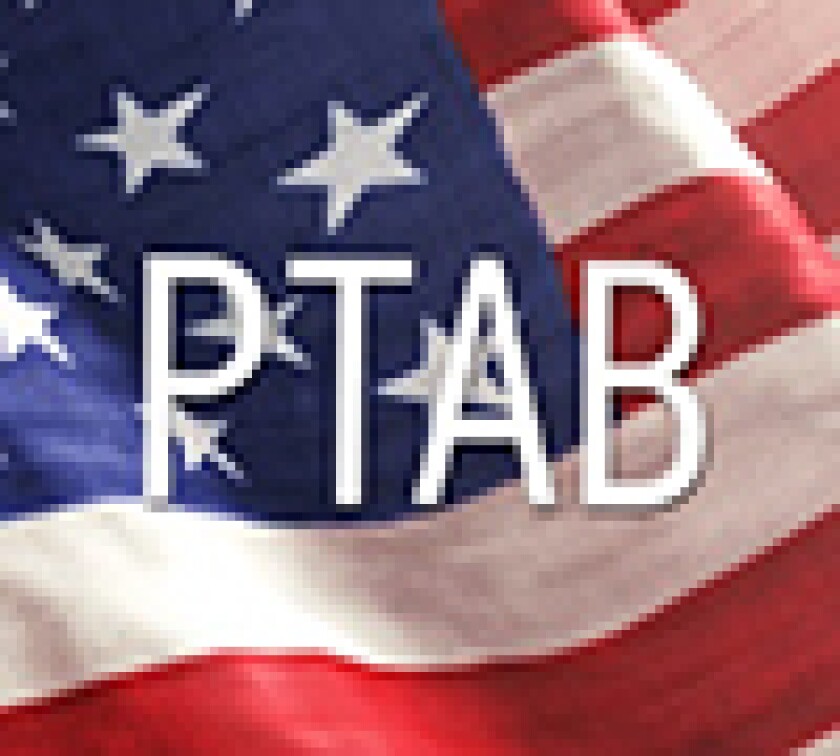
Cuozzo asked the Supreme Court to consider whether the Patent Trial and Appeal Board (PTAB) can construe claims according to their broadest reasonable interpretation (BRI) rather than their plain and ordinary meaning and whether the Board’s decision to institute an IPR proceeding is judicially unreviewable by the Federal Circuit. The case involves the first ever inter partes review (IPR) petition to be filed and the first PTAB final written decision.
At oral arguments, the transcript of which can be viewed here, Garrard Beeney of Sullivan & Cromwell argued on behalf of Cuozzo. Curtis Gannon, assistant to the solicitor general of the Department of Justice, argued on behalf of the USPTO.
Four reasons to reverse
The conversation mostly focused on the first question of whether BRI or the standard used in district court is the appropriate standard for PTAB proceedings, with the second question of whether a decision to institute is appealable barely touched upon.
Beeney began by arguing the BRI does not comport with the congressional purpose of IPR. He said the AIA had no explicit statutory language directing the USPTO to use any particular standard of claim construction.
He gave four reasons why the court should reverse: BRI demands a broad ability to amend claims, whereas Congress provided only an extremely limited ability to amend that in practice is almost always denied; it makes no sense to apply to the property rights adjudicated under IPRs a hypothetical interpretation of their meets and bounds rather than doing what district courts do, which is to give claims their actual plain and ordinary meaning; anomalies injurious to patentees stemming from IPR such as a claims meaning different things in the courts and before the PTAB and different results as to whether a patentee’s property rights are taken away; and the government has not offered any support for using BRI that “is in any way tethered to inter partes review,” said Beeney.
Justice Breyer said, however, that is a different way of looking at PTAB trials than “trying to build a little court proceeding”.
“There are these things, for better words, let's call them patent trolls, and … the Patent Office has been issuing billions of patents that shouldn't have been issued – I overstate – but only some,” Justice Breyer said. “And what happens is some person in business gets this piece of paper and … looks at it and says, oh, my God, I can't go ahead with my invention. And so what we're trying to do with this process is to tell the office, you've been doing too much too fast. Go back and let people who are hurt by this come in and get rid of those patents that shouldn't have been issued. Now, we will give you, again, once the same chance we gave you before, and that is you can amend it once if you convince the judge you should have done it before. But if, on the broadest possible interpretation, you know, reasonable interpretation, it shouldn't have been issued, we're cancelling it.”
Breyer said that would be for “the benefit of those people who were suffering from too many patents that shouldn't have been issued in the first place”. He continued: “If it's that second purpose, then I would think, well, maybe this is right, what they're doing.”
Later responding to a question from Justice Kagan about whether BRI does everything needed given the “backdrop of how the PTO generally operates”, Beeney responded: “[T]he process that Congress enacted in IPR is a brand new adjudicatory proceeding unlike the PTO has ever confronted in the past. I mean, arguing that one in inter partes review should use the broadest reasonable interpretation is … really the quintessential example of trying to pound a square peg into a round hole simply because that peg used to fit a very different hole.”
“A partial Groundhog day statute”
Speaking on behalf of the government, Gannon conceded that Beeney was right when he pointed out that the vast majority of motions to amend had been denied. But Gannon noted only about 13% of patent holders in IPRs had actually filed motions to amend.
“It's a small number. But the vast majority of these amendments are denied on grounds of unpatentability. And this is a reason that actually isn't that different from what would happen in the initial exam or in the or in the reexam,” he added.
Justice Breyer didn’t seem convinced by Gannon’s comments on amending claims. He referred to the statute as “a partial Groundhog Day statute”, partly designed to allow businesses getting threats in respect to patents that never should have been issued to go back to the USPTO.
“Now, if that was the problem, then it doesn't make it does make sense to say at least the PTO has the authority under a partial Groundhog Day statute to do that part of it over,” said Justice Breyer. “And that's not surprising; there are only six that actually got amended, because they narrowed it before and because the PTO held these are invalid, anyway. Okay? That isn't – so that doesn't move me.”
He continued: “But look at the view I just expressed of the statute. There is another view that this is just a little district court proceeding designed to save people that time and money that they'd have to spend on a big district court proceeding. All right? Now, what's the evidence that the first view that I had, which would not say this is just a little district court proceeding, is correct?”
Gannon pointed to the legislative history that a purpose of the AIA was to improve patent quality.
“But then in terms of the notion that it's not just intended to be another little district court proceeding that happens to be faster and cheaper … is all of the structural differences that Congress imported here to ensure that it wasn't going to be exactly the same,” said Gannon. “And so, as I mentioned, it was going to be limited to certain particular grounds of … unpatentability under 102 and 103. The evidence that could be considered there is limited. The only prior art that can be considered is prior art that comes in patents and prior publications. That's a narrower universe than could be used in a district court proceeding. And, of course, the burden of proof is going to be different.”
He said taking all that into account and ensuring there is a chance to amend claims means that it is not sufficiently like a district court litigation for the USPTO to depart from its longstanding use of BRI.
Chief Justice Roberts responded: “I'm sorry. It just seems to me that that's a bizarre way to … decide a legal question. I mean … how does it work? Whoever gets to the judgment first, or…”
Concluding the arguments, Beeney in his rebuttal said: “Let me just begin by saying that as with the government's brief, we heard nothing today that suggests that the use of the ordinary claim construction would not accomplish Congress's purpose. But what we would avoid is all of the bizarre harms that are caused by the use of the broadest reasonable interpretation expedient.”









